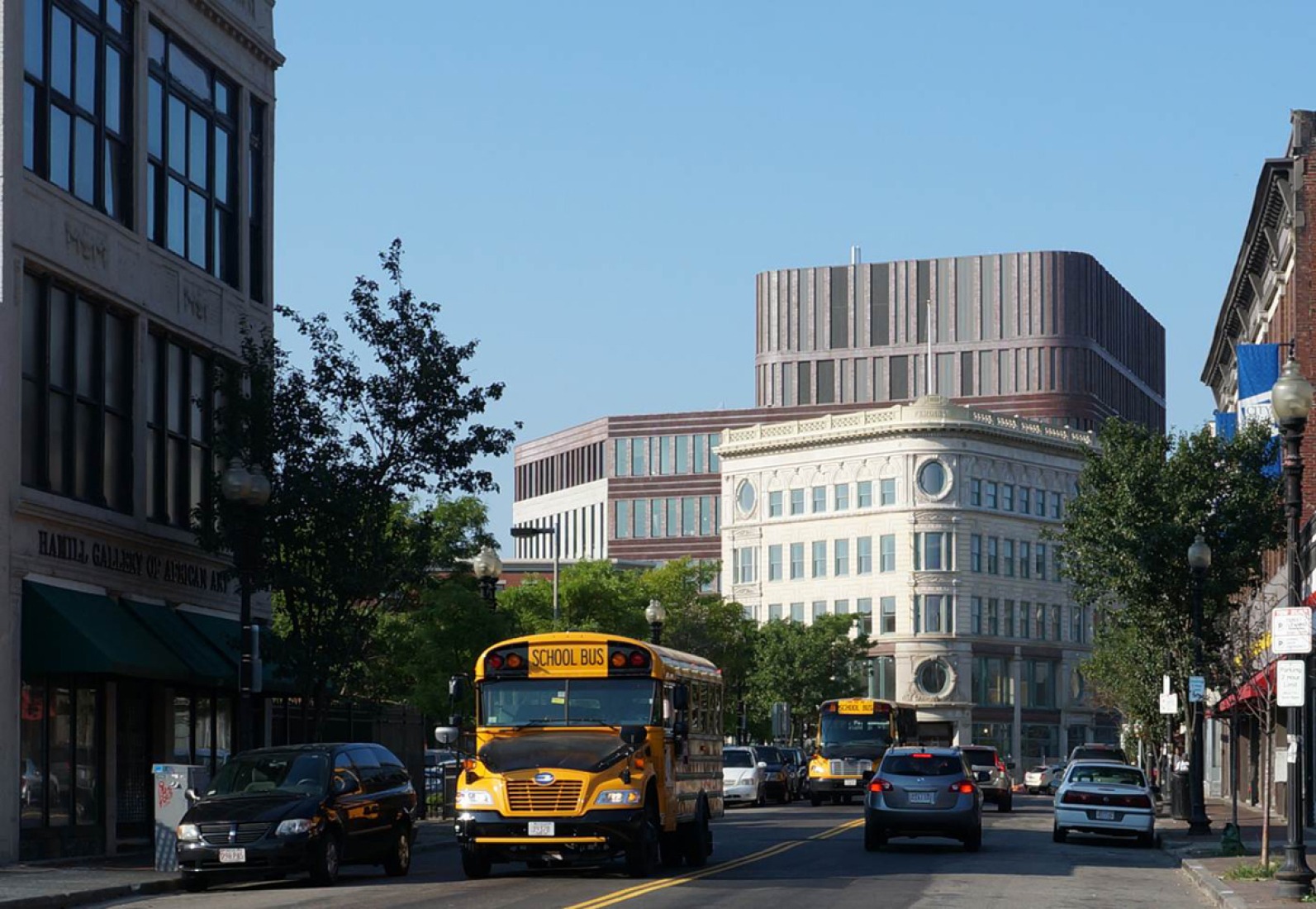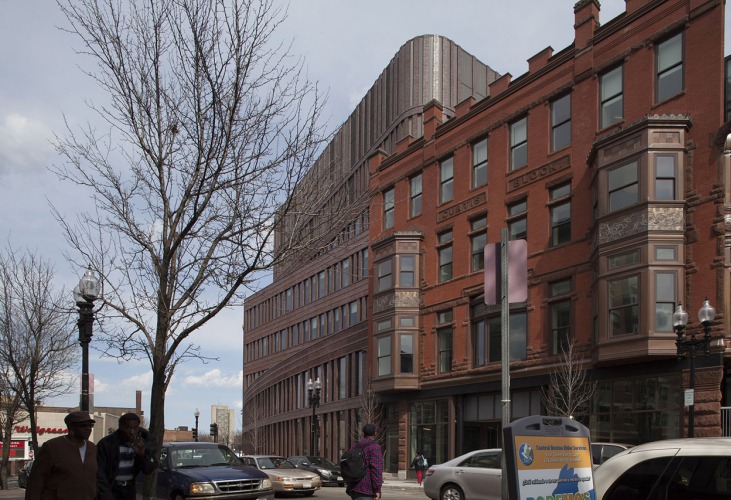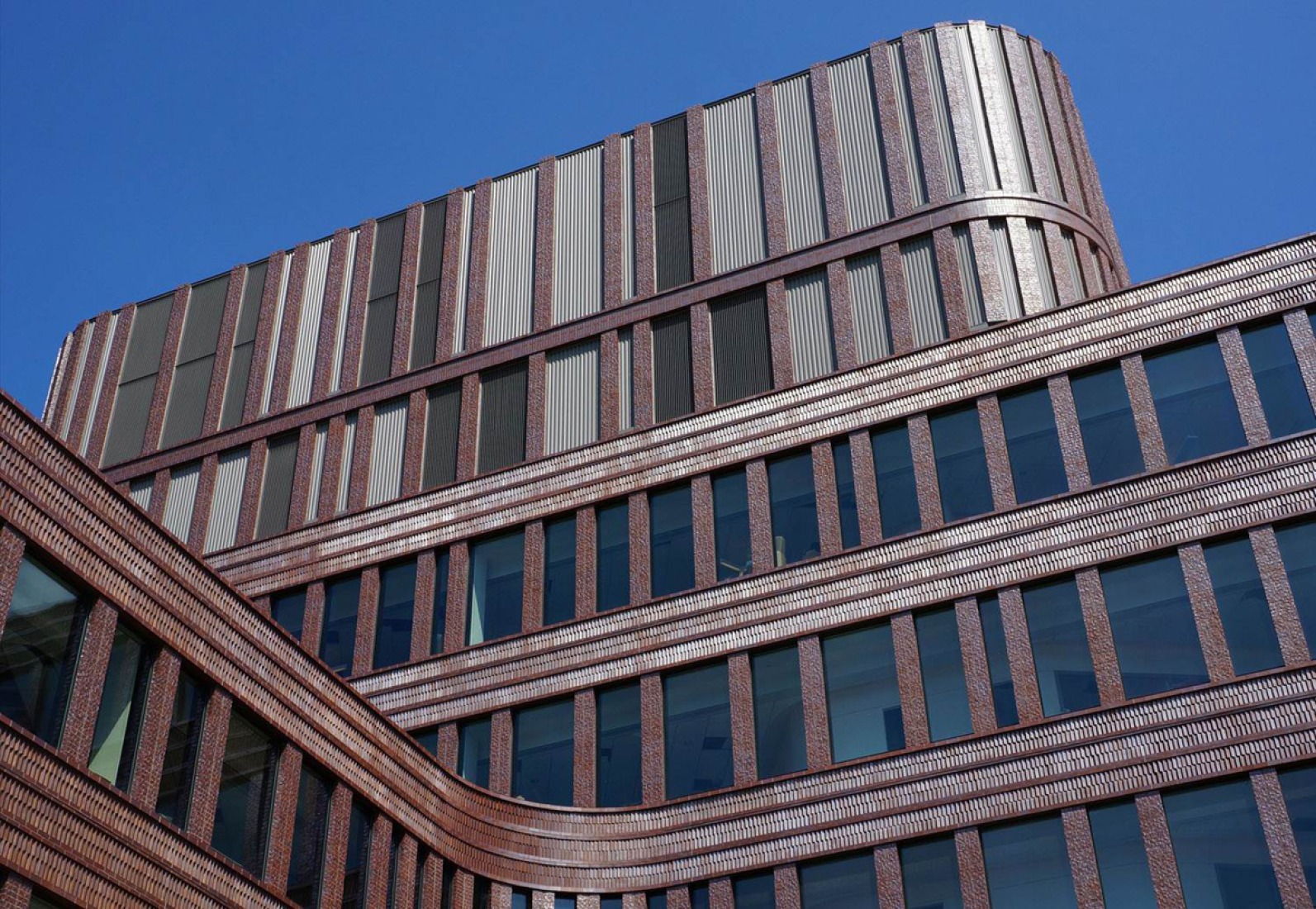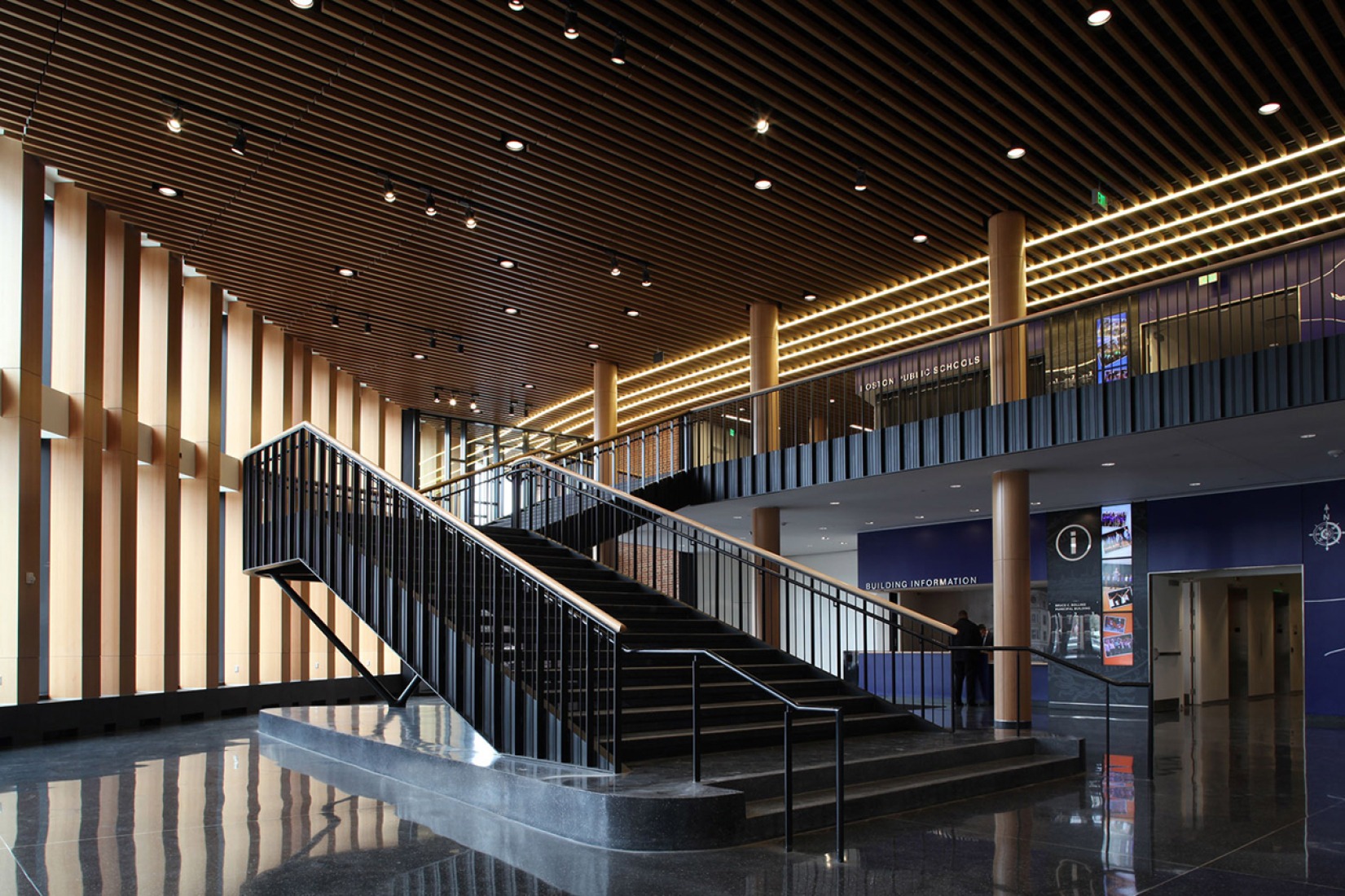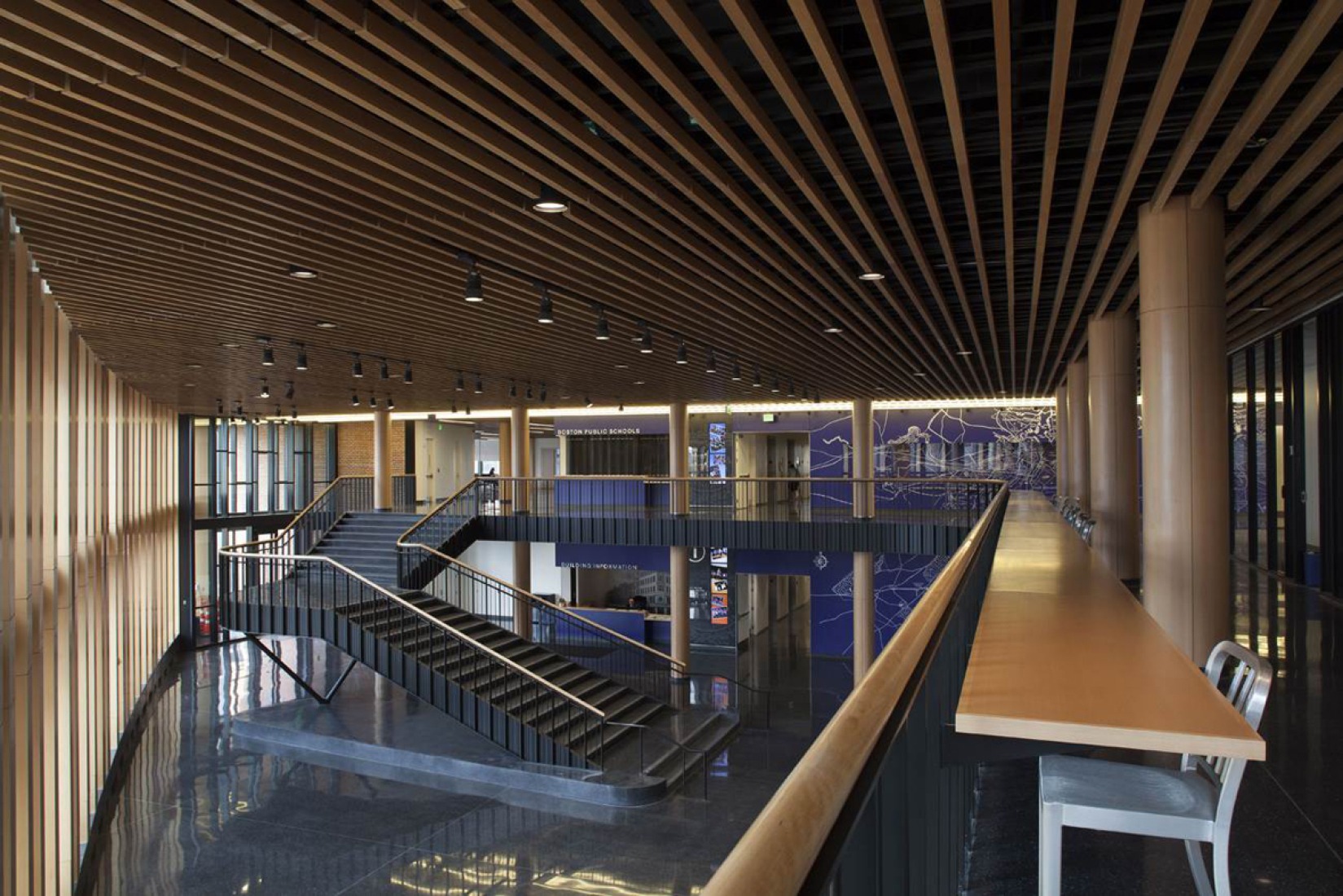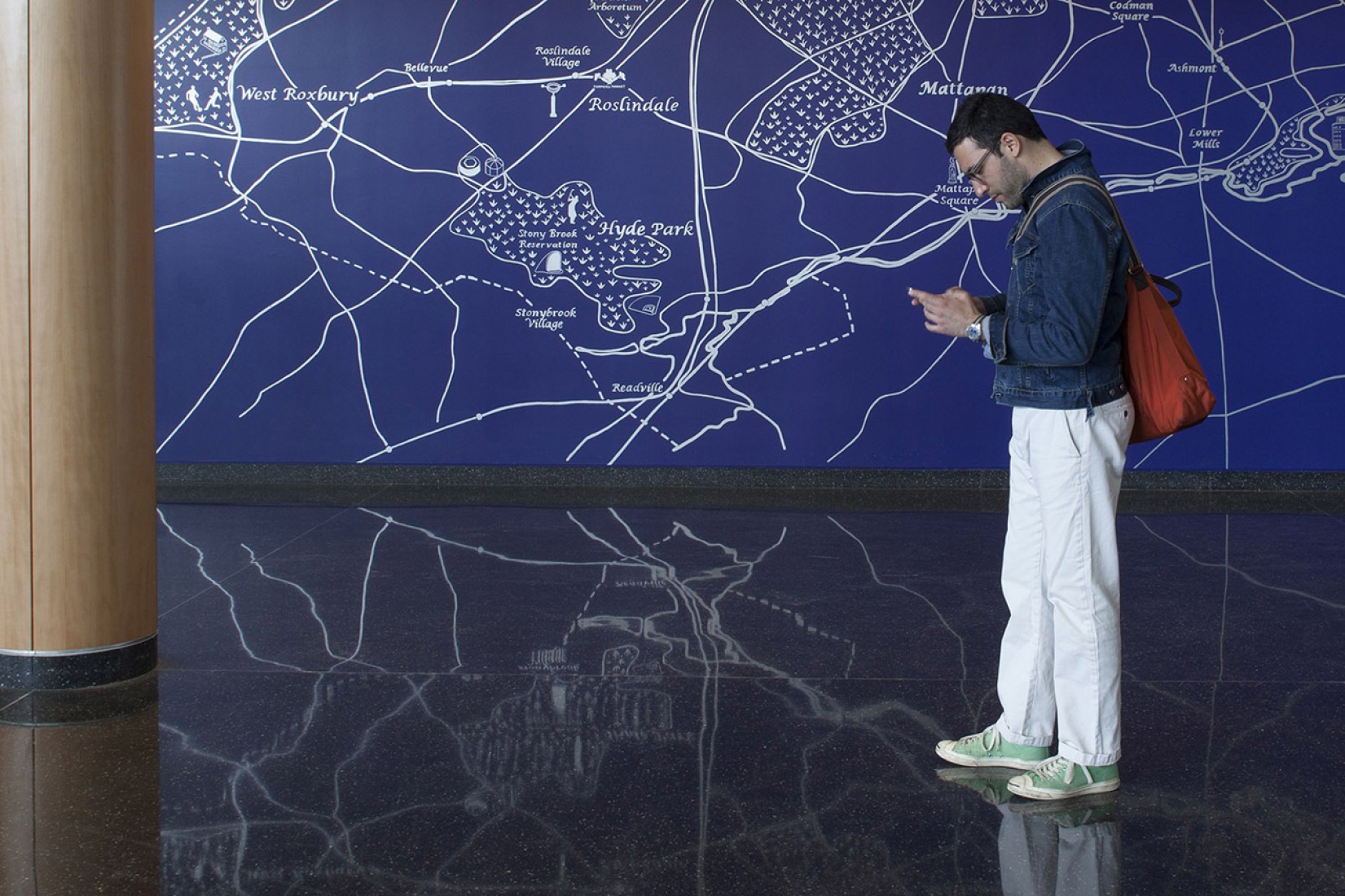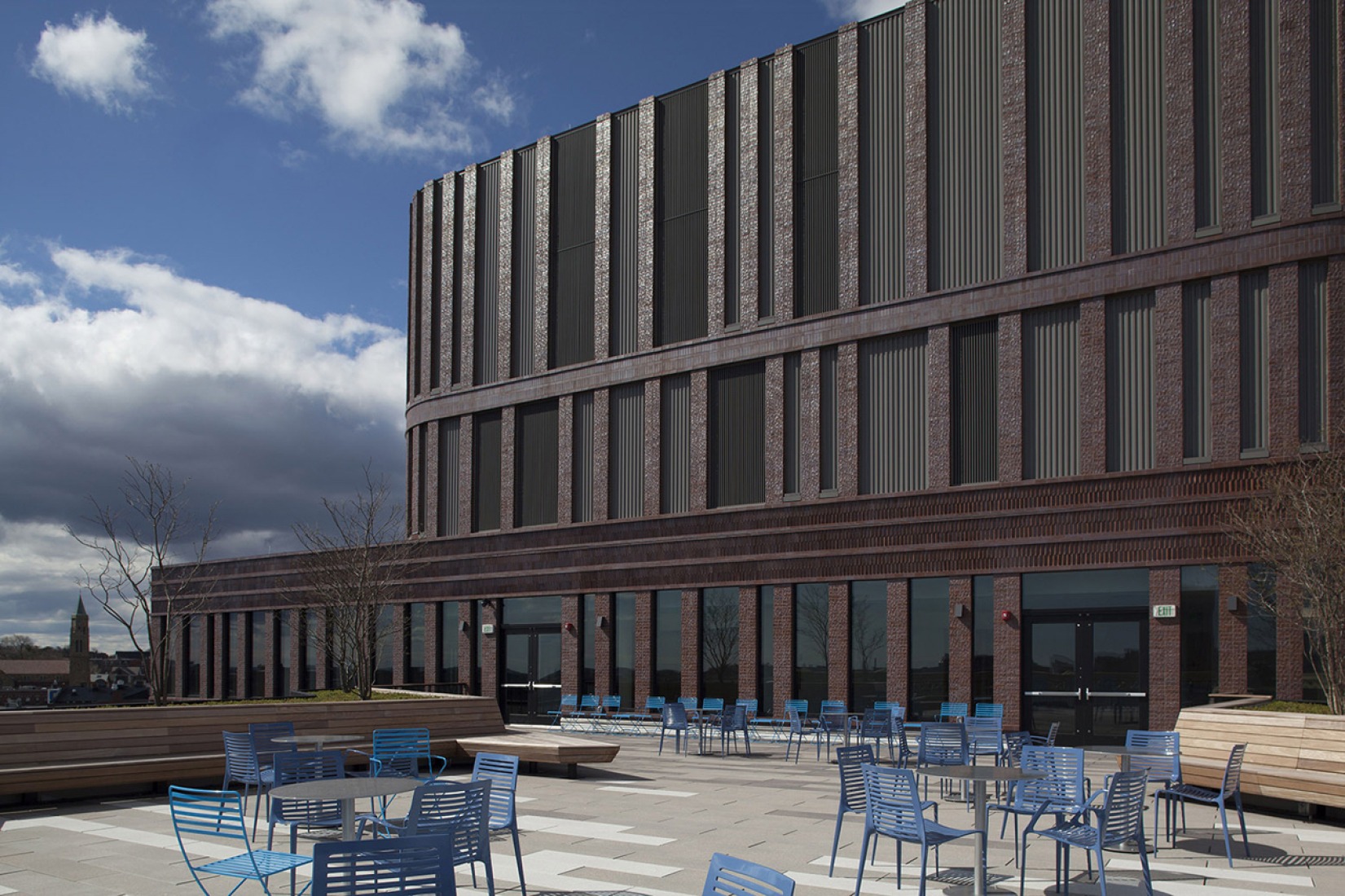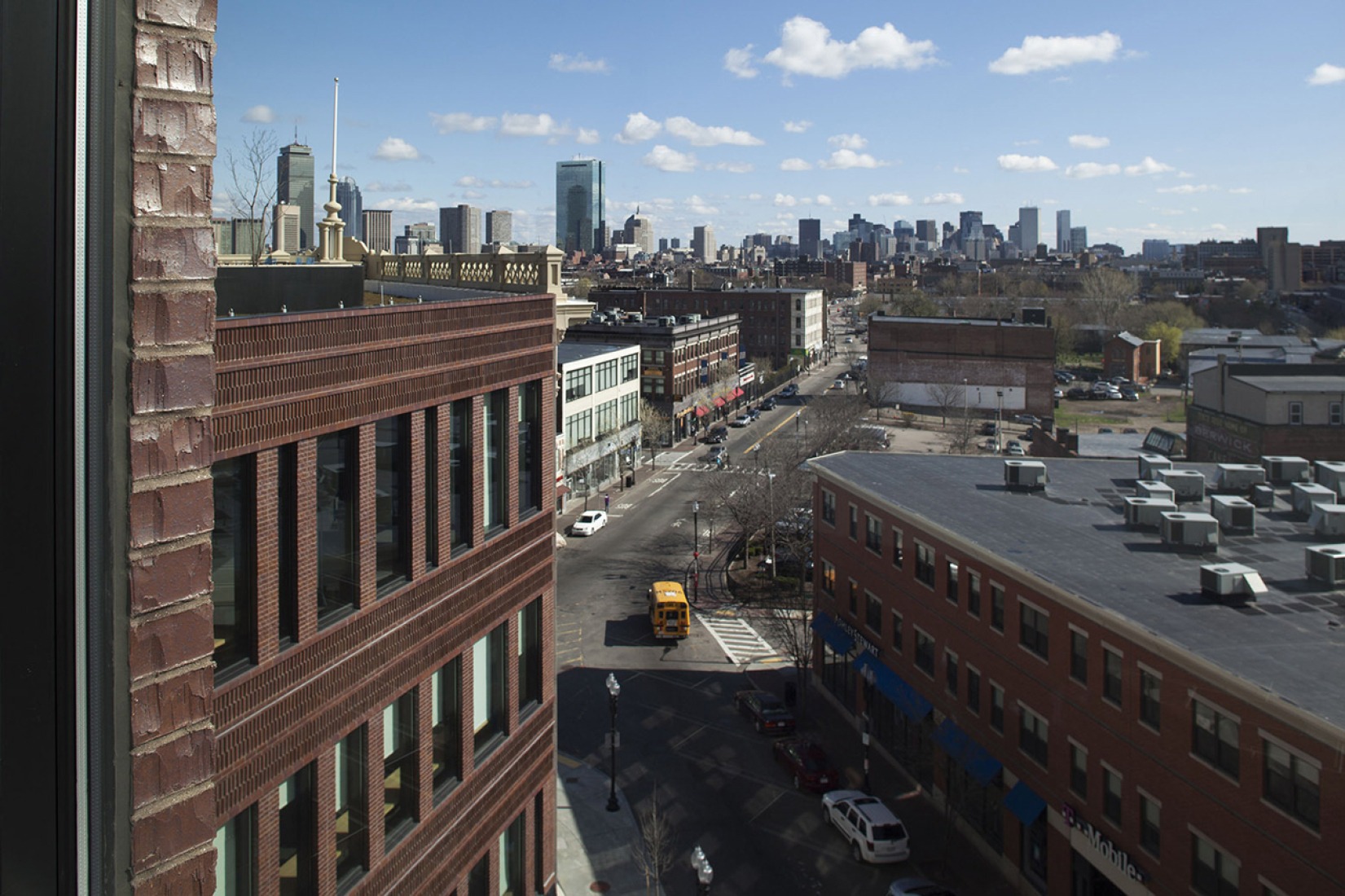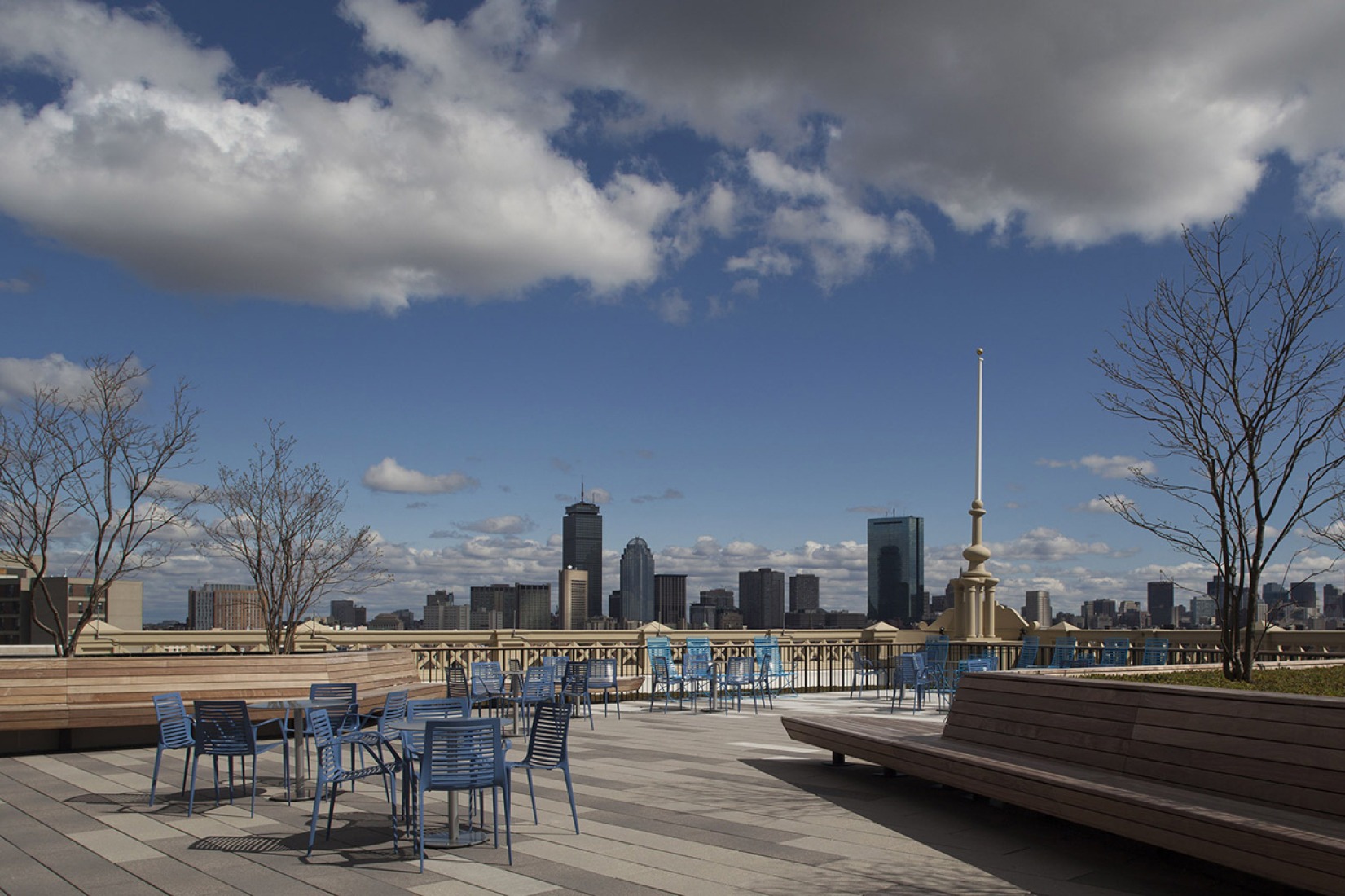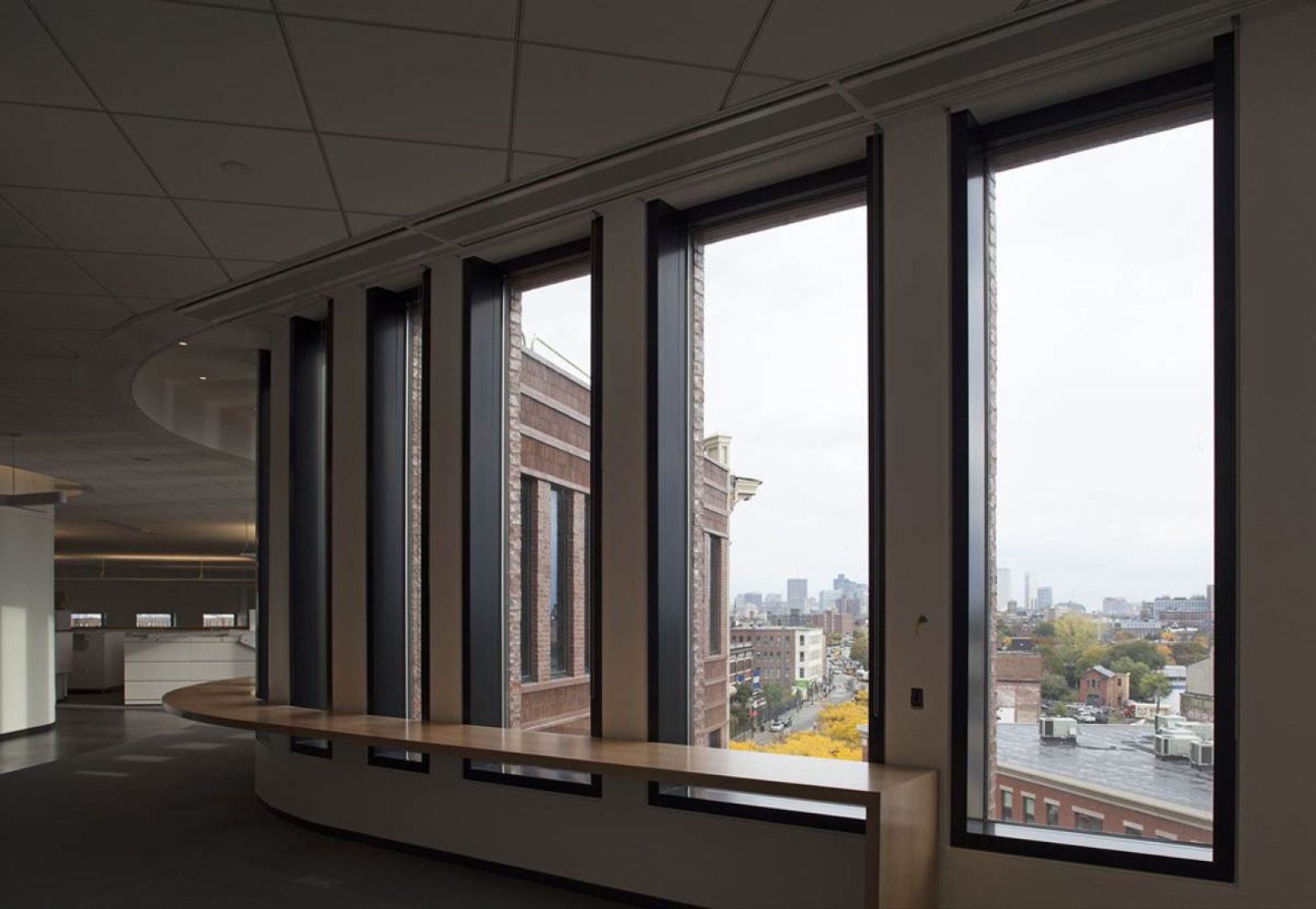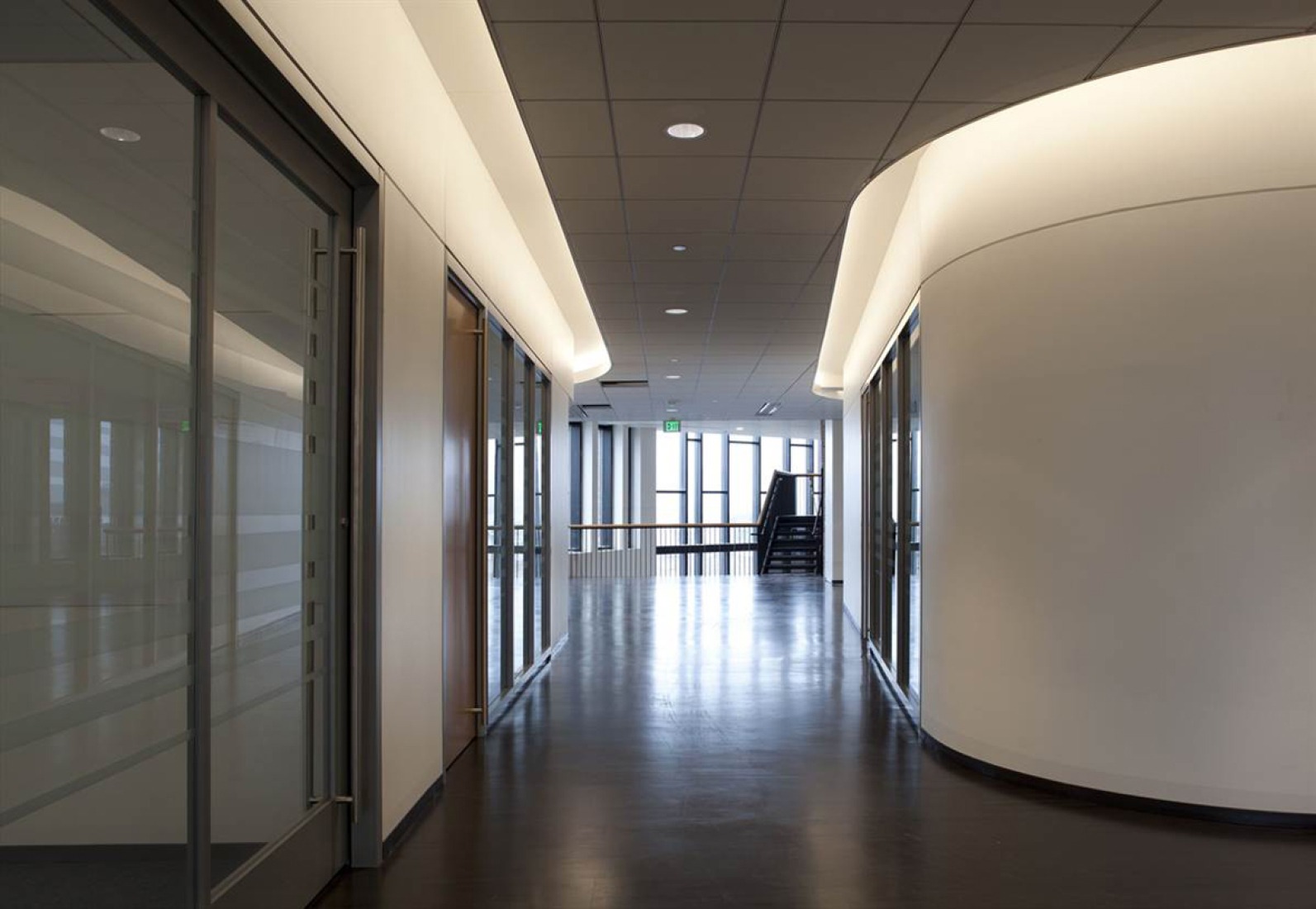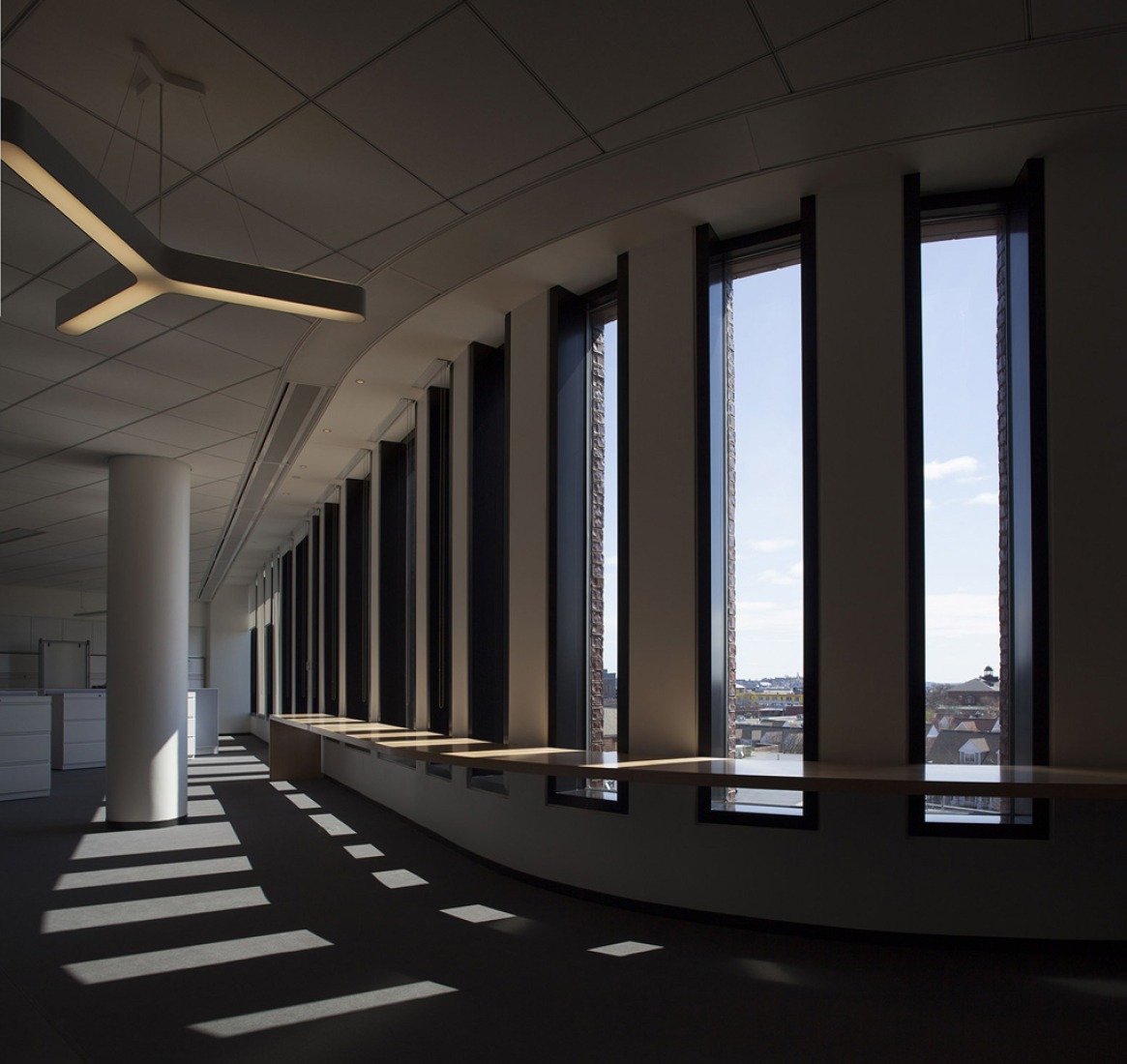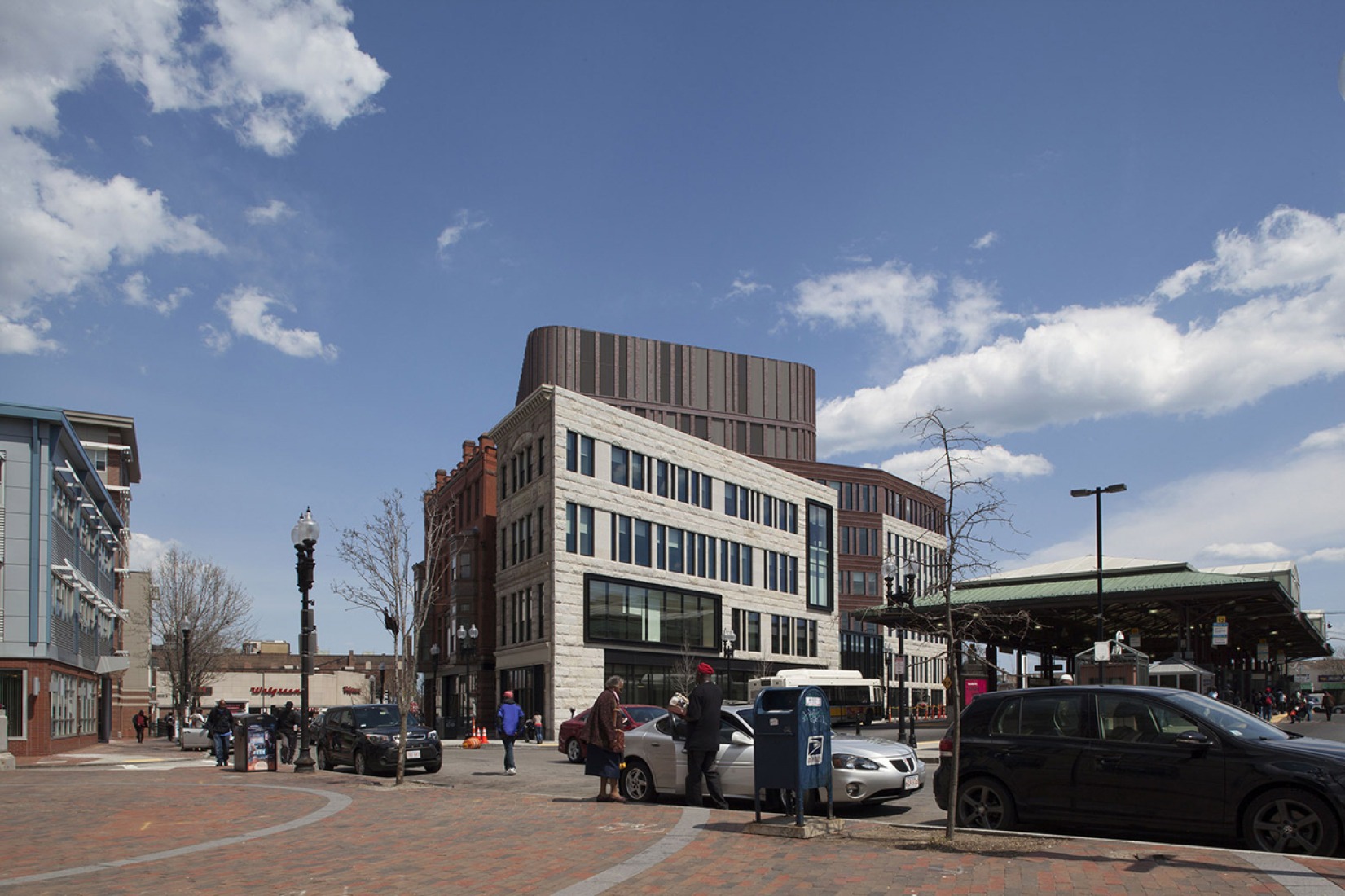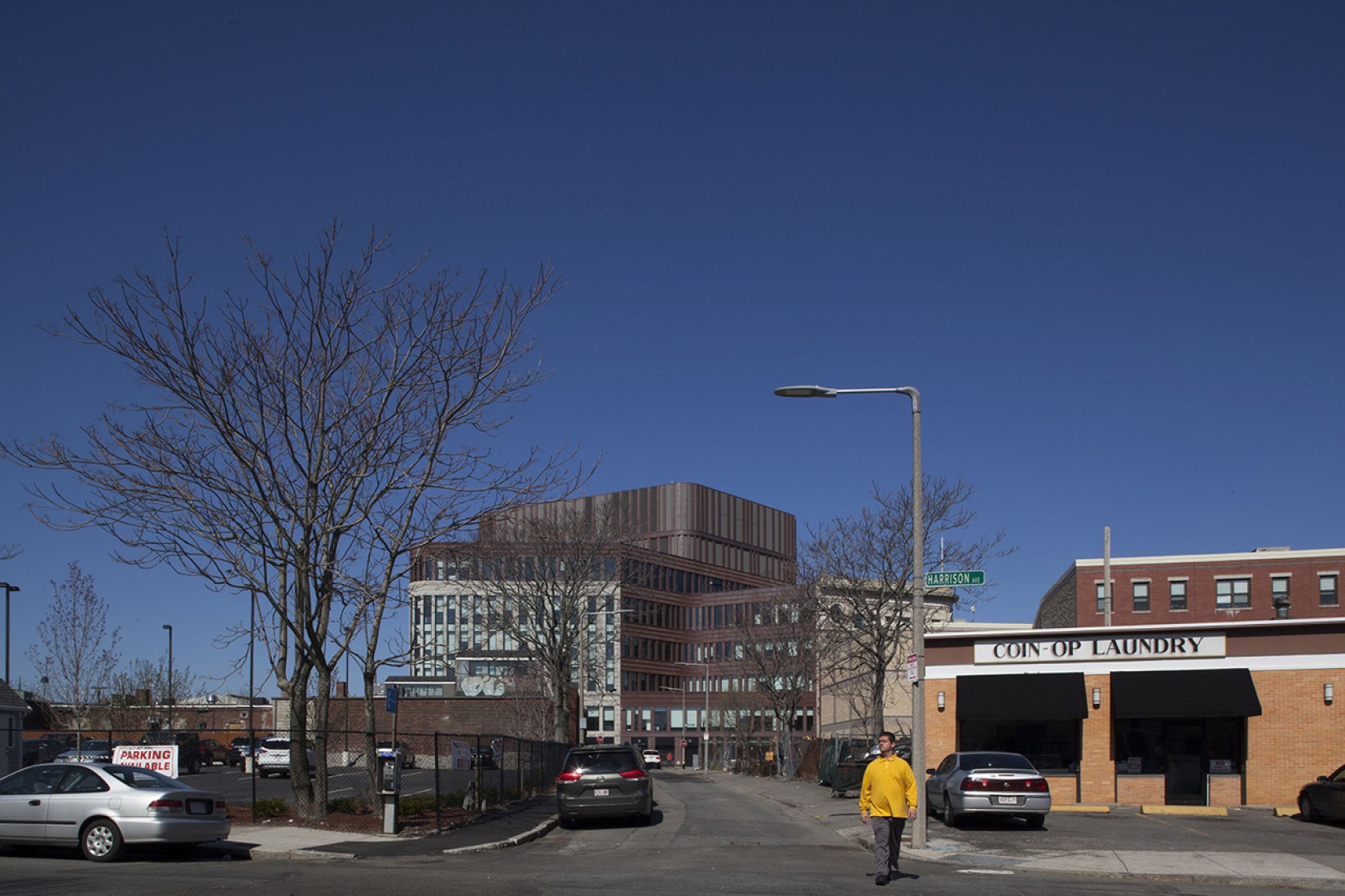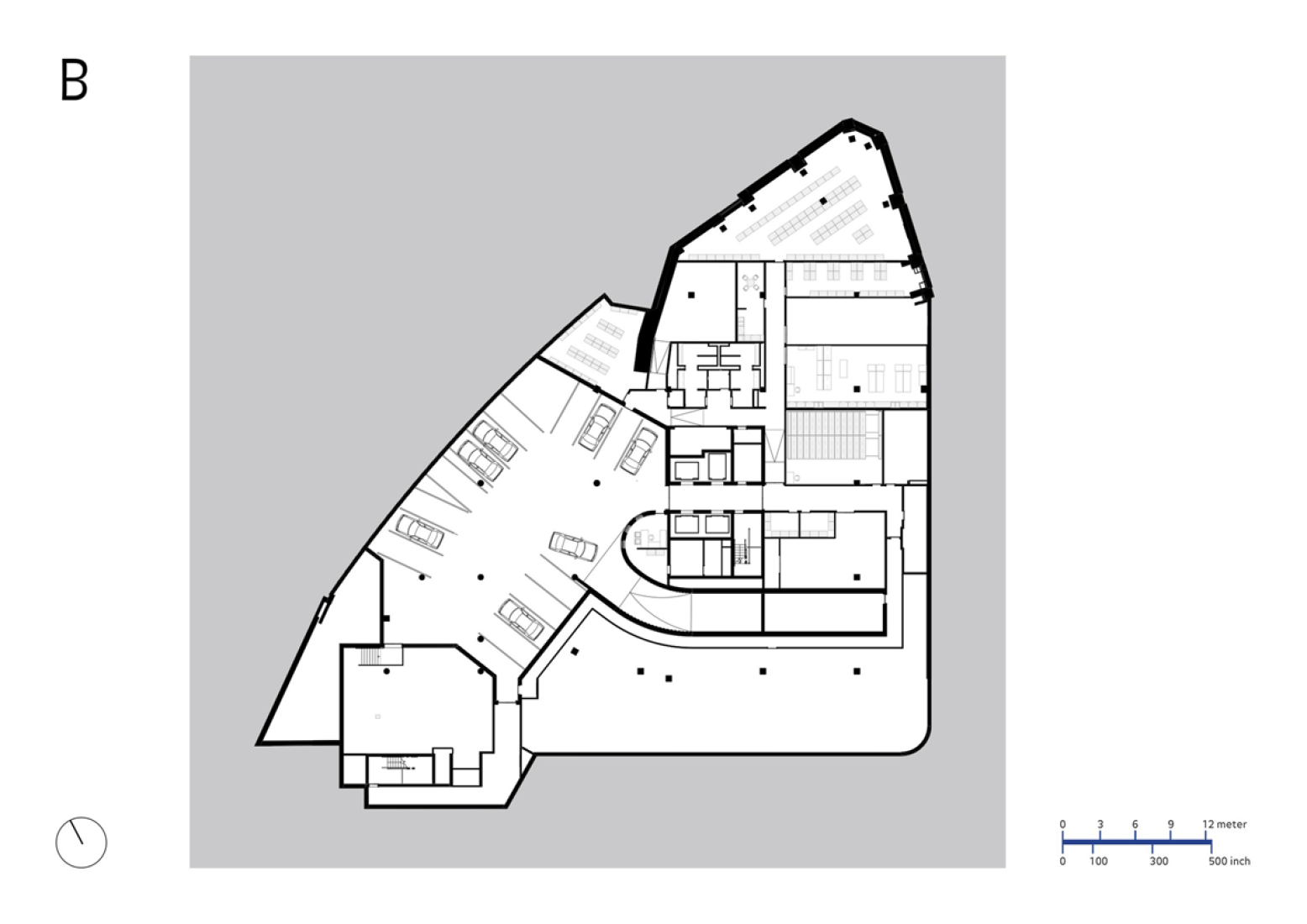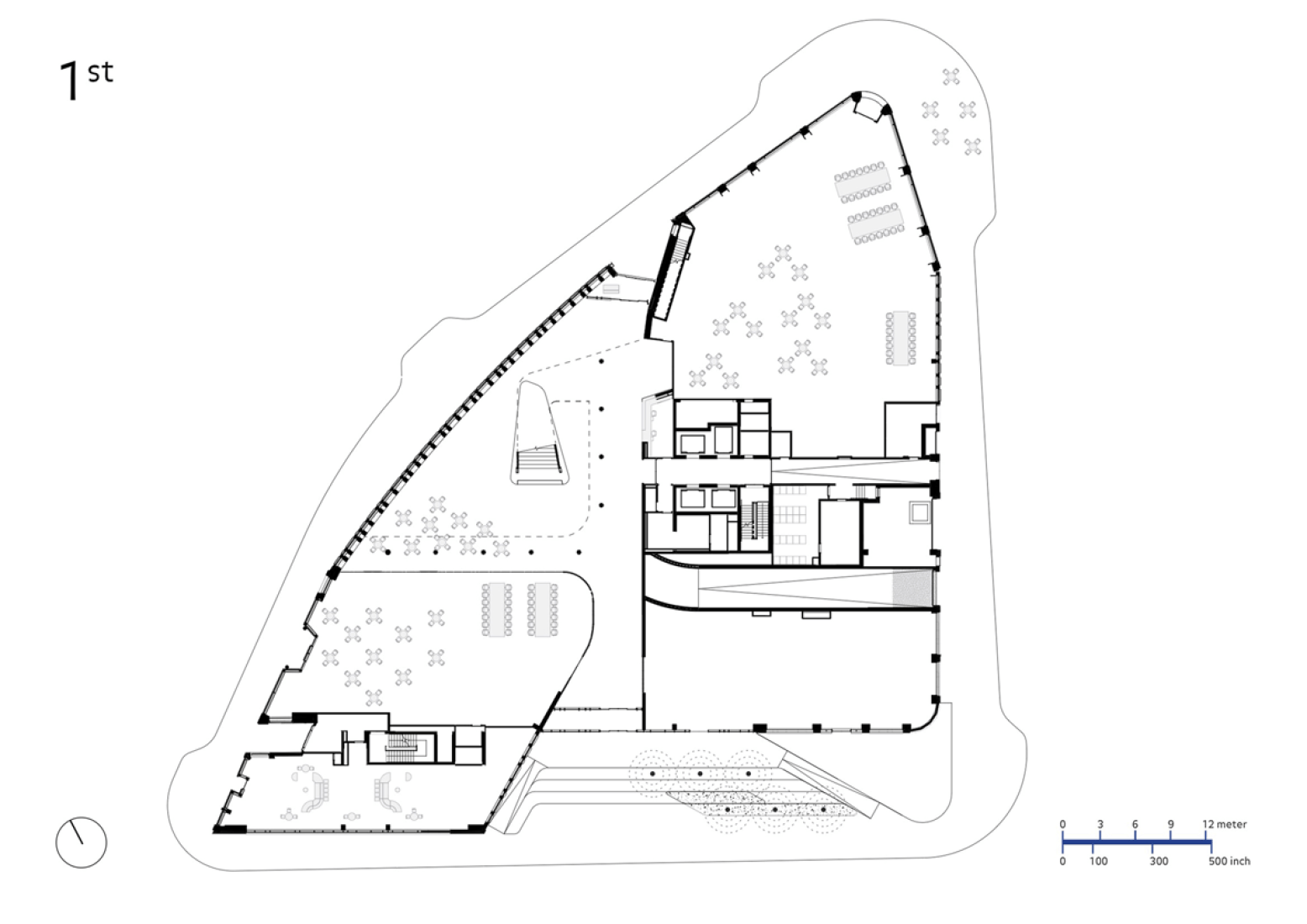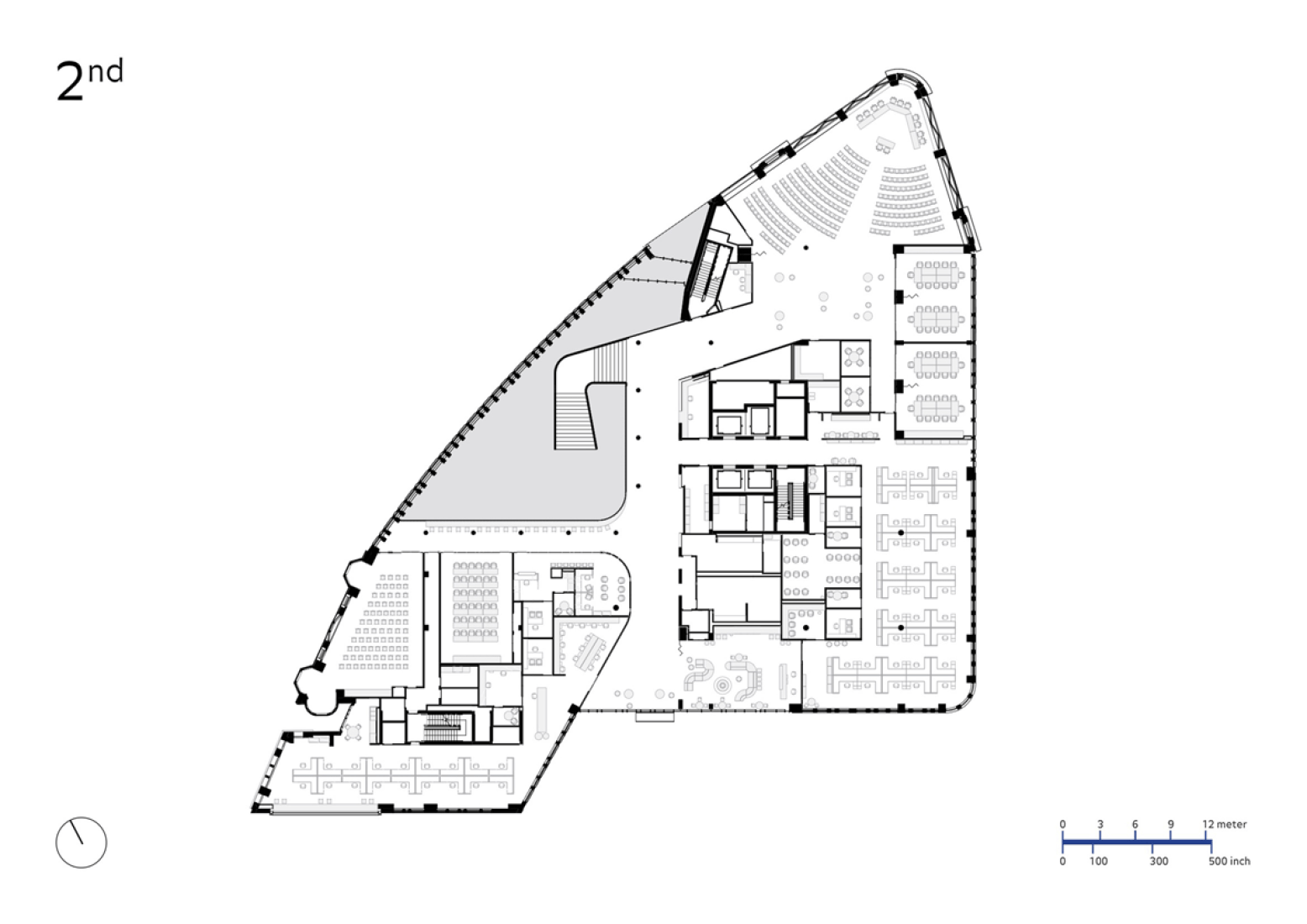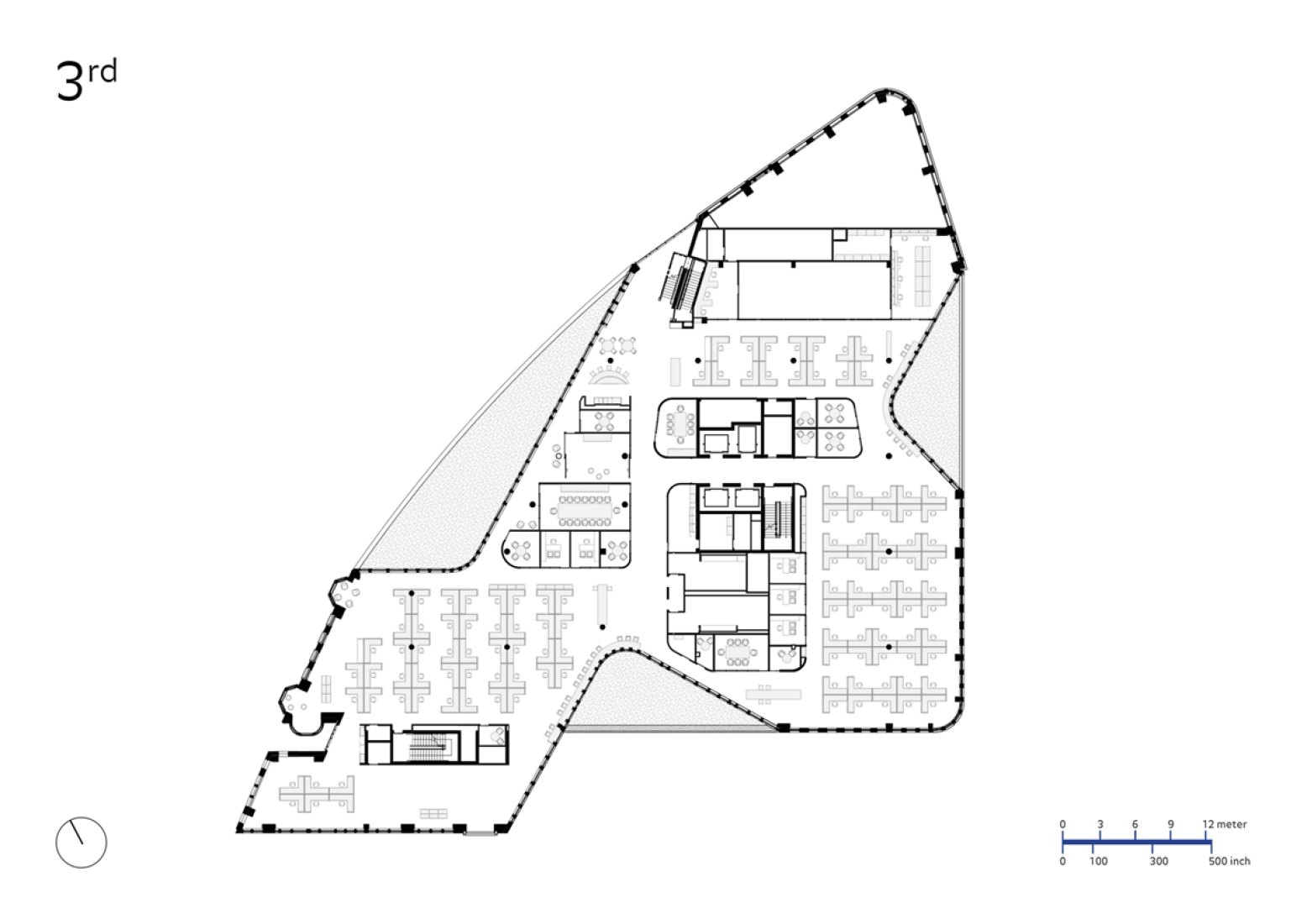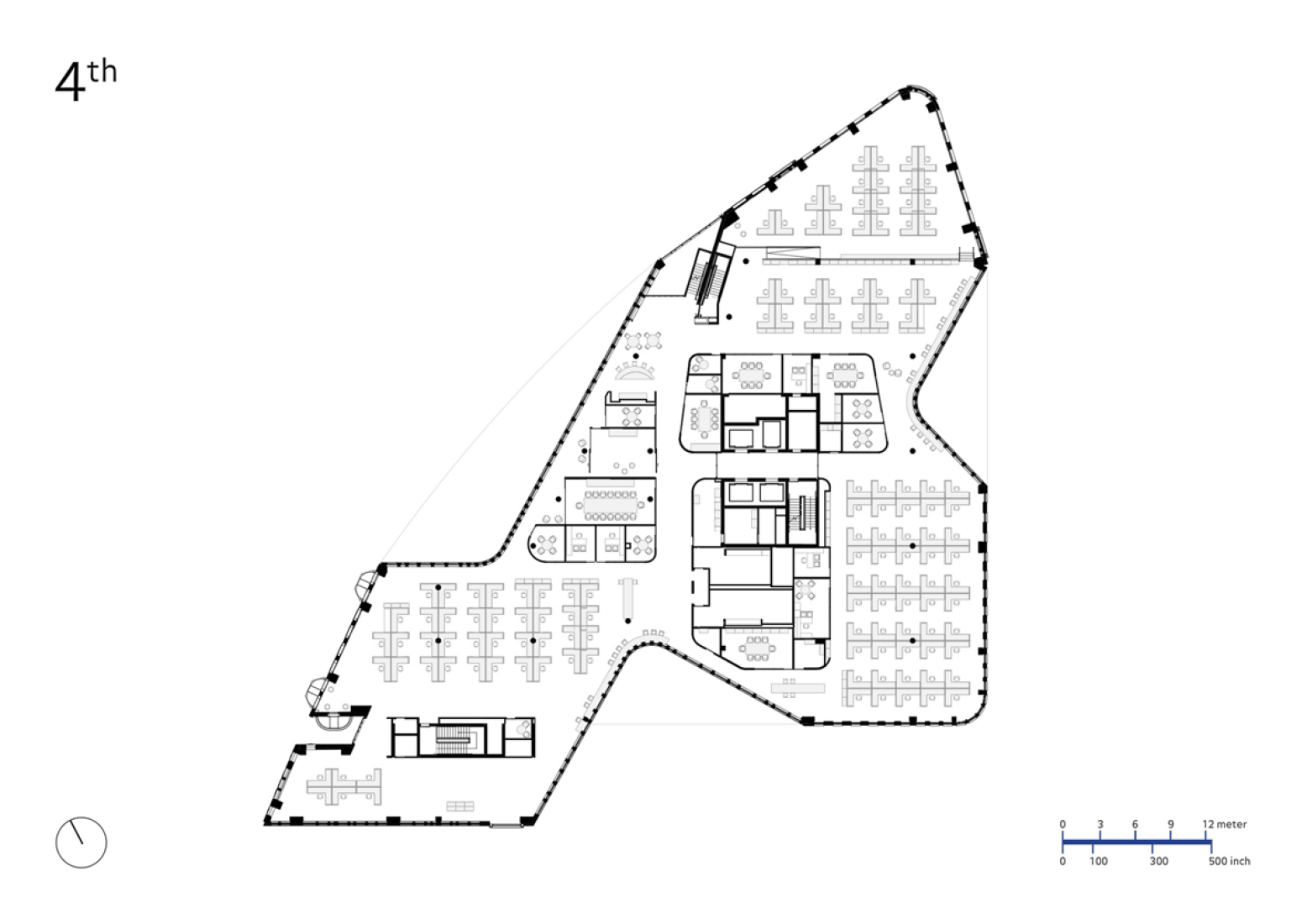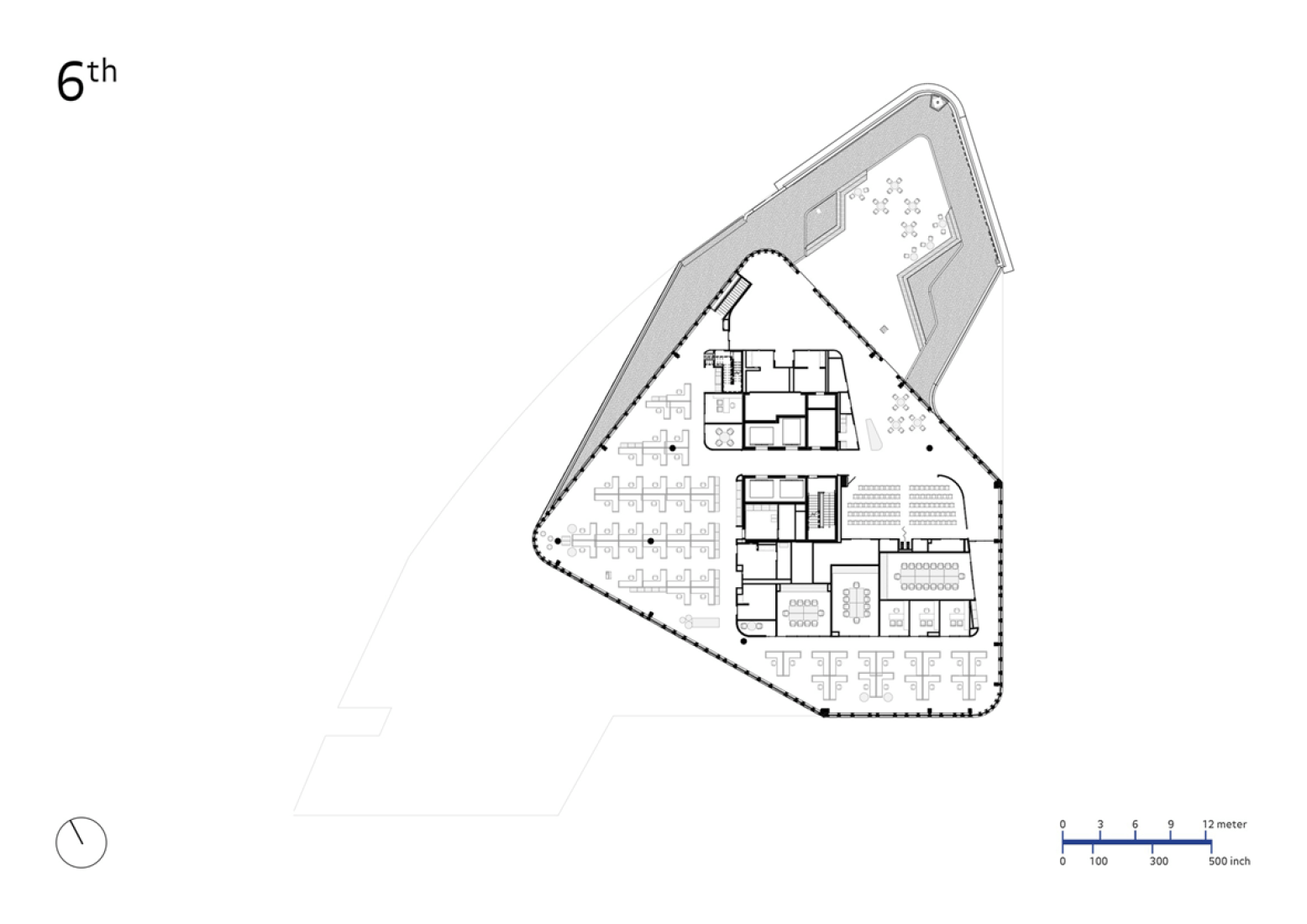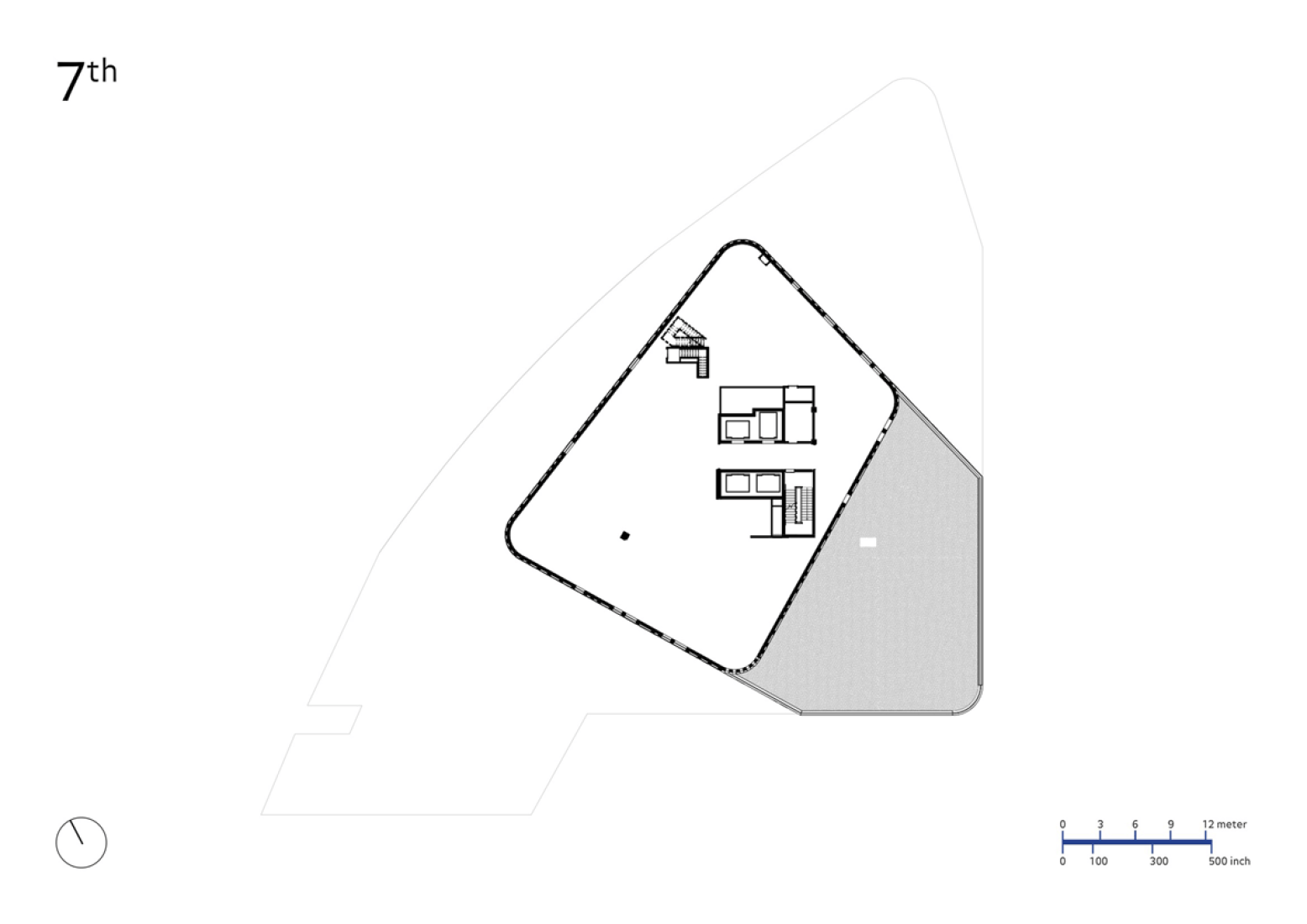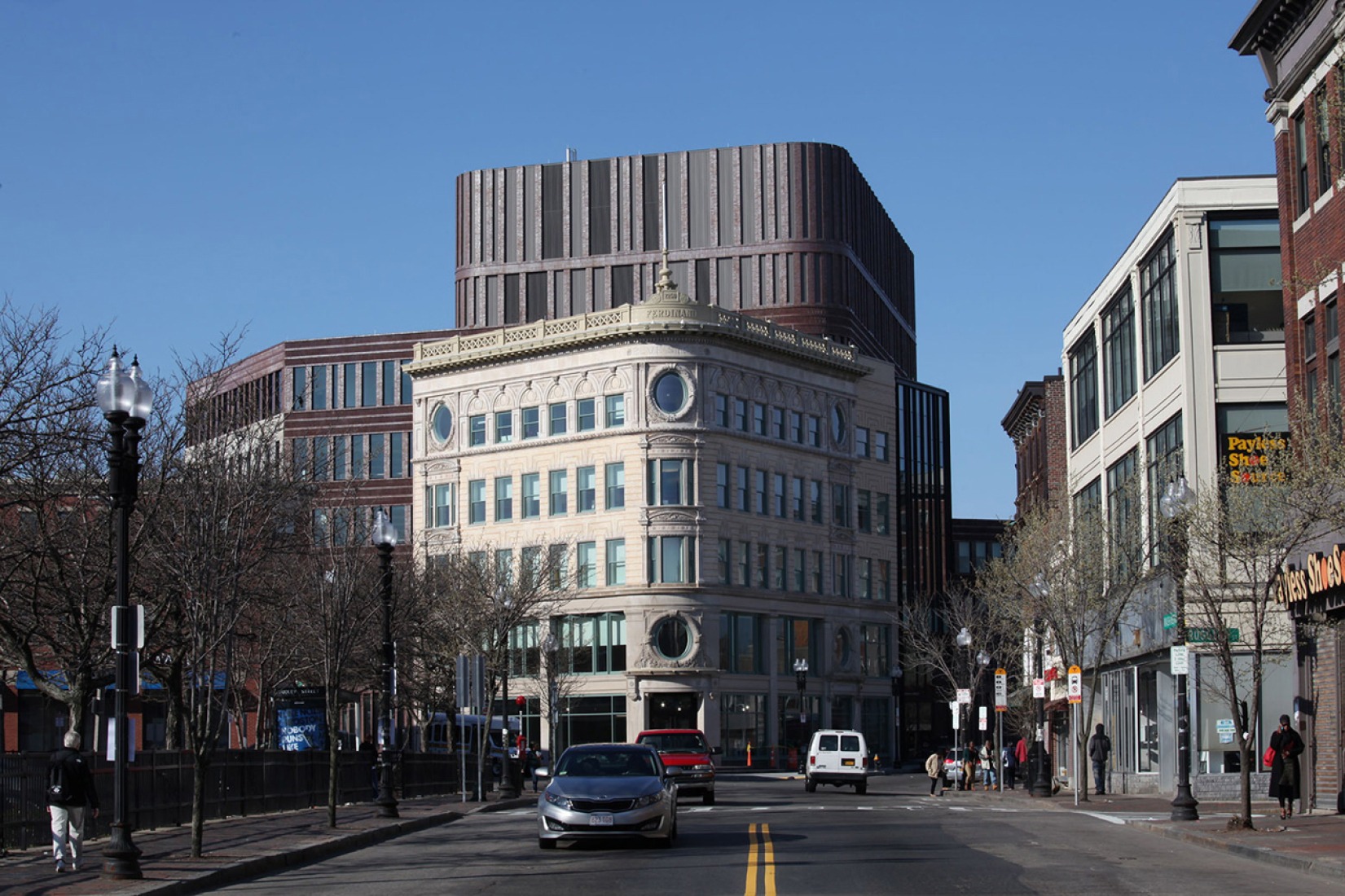El edificio fue diseñado por el estudio holandés Mecanoo, junto con la firma Sasaki Associates afincada en Estados Unidos. El edificio municipal Bruce C. Bolling de Boston alberga el departamento de Escuelas Públicas de Boston (BPS) y desempeña un papel central en la reactivación del barrio de Roxbury Dudley. El edificio de ocho plantas alberga las oficinas de la escuela pública así como espacios de estudio para estudiantes, eventos educativos y reuniones de la comunidad. En planta baja incluye locales comerciales y el Centro de Innovación de Roxbury.
Descripción del proyecto por Mecanoo
Como testimonio de la visión del último alcalde Thomas M. Menino, el edificio municipal Bruce C. Bolling se emplaza con orgullo sobre la Plaza Dudley. Fue Menino quien decidió que en la Ciudad de Boston se desarrollase una trama de vital importancia mediante la agrupación de 500 funcionarios del departamento de Escuelas Públicas de Boston en un nuevo edificio de oficinas municipales dedicadas a la educación, junto con un centro comunitario y espacio comercial.
La segunda planta del edificio es la sede del Centro de Innovación de Roxbury, iniciada por el alcalde Martin J. Walsh. El diseño de Mecanoo y Sasaki encarna la visión de la ciudad de un símbolo de cambio, un edificio libremente accesible a todos que celebra la historia de Roxbury inaugurando una nueva era para el barrio. Debido a que cada estudiante y sus padres en el estado visitará el BPS al menos una vez, el edificio está diseñado para ser amigable, positivo y de inspiración para la gente de todas las edades.
Desafía lo que es un edificio de oficinas, proponiendo nuevas formas de trabajo y la promoción de la colaboración y la transparencia a través de un diseño abierto. Las fachadas históricas existentes de los edificios Ferdinand, Curtis y Waterman han sido ampliamente restauradas y tejidas en un edificio nuevo y brillante.
Haciendo referencia a estos edificios históricos, el volumen central del nuevo centro municipal también encarna un acercamiento consagrado al oficio de la construcción. Como un edificio bostoniano con un toque holandés, una interpretación contemporánea de la estratificación clásica se manifiesta en la fábrica de ladrillo que abarca una serie de diferentes técnicas de albañilería desde el aparejo a soga, el horizontal apilado y el aparejo a soga vertical continuo. Dentro de la fachada de ladrillo hay elementos en relieve, que se arrojan sombras los unos a los otros en un ritmo juguetón. Debido a las propiedades vítreas del ladrillo, la fachada refleja la luz de diferentes maneras dependiendo de las condiciones meteorológicas.
Diseñado para tener un zócalo transparente en la planta baja, conocida como la "Nueva Plaza Dudley" y un remate superior a modo de faro, la forma del edificio se remite a la trama urbana.
Los visitantes también podrán maravillarse en el quinto piso con la terraza de la azotea, de forma única y accesible a todos, ofrece vistas de la metrópoli hacia el centro y de la bahía a lo lejos, suponiendo el renacer de la plaza de Dudley en un punto neurálgico de la ciudad de Boston.
CREDITOS. FICHA TÉCNICA.-
Arquitecto. Esquipo de diseño.- Mecanoo, Sasaki associates.
Paisajismo e ingeniería civil.- Sasaki Associates, Watertown, MA/US.
Asesor de preservación histórica.- Building Conservation Associates, Dedham, MA/US.
Ingeniería.- Arup, Cambridge, MA/US.
Consultor de iluminación.- Lam Partners, Cambridge, MA/US.
Constructora.- Shawmut Design and Construction, Boston, MA/US.
Gestor del proyecto.- PMA Consultants, Braintree, MA/US.
Cliente.- Ayuntamiento de Boston.
Superficie.- 16,700 m2.
Estado.- Completado (2012 - 2015)
Programa.- LEED Silver office building for Boston Public Schools integrating historic buildings and facades with community space and retail.
Dirección.- Dudley Square Main Street, Boston, USA.

